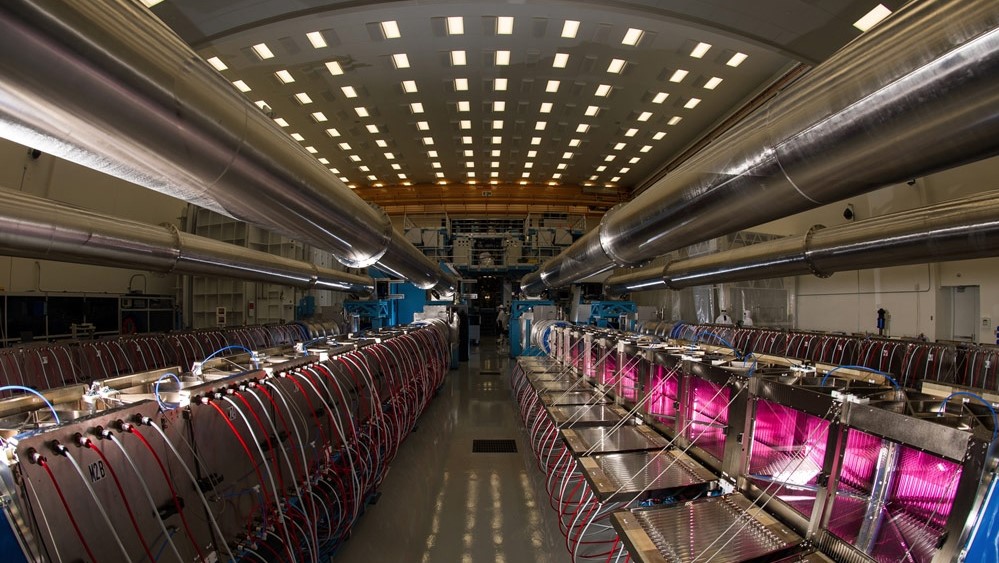In mid-December of 2022, a major milestone in fusion was made by researchers at Lawrence Livermore National Laboratory’s (LLNL) National Ignition Facility (NIF), in which fusion has finally achieved ignition—meaning a fusion reaction has created a net gain of energy from the target when compared to the laser energy delivered. The latest milestone could hint at the future of clean, safe, and reliable energy.
Definition of Fusion and Its Misconceptions
To give context to the situation, fusion is the process of fusing two or more atoms of light elements to form a heavier atom and thus releasing energy. While fusion is the process that powers stars, including the sun, fusion cannot occur naturally on our planet as the atoms naturally repel each other due to the positive charge of the nuclei. Thus, for fusion to occur, scientists create extreme pressure and temperature conditions, to simulate the process done by stars, by using lasers to push the nuclei together. Chris Deeney, director of Rochester’s Laboratory for Laser Energetics (LLE), summarizes perfectly by saying “fusion is about creating small stars in the laboratory”, adding: “in fact, the temperatures on the recent NIF shot exceeded those at the center of the sun.”
Not to be mistaken by nuclear fission, nuclear fusion does not create any long-lived nuclear waste, nor does it emit any harmful greenhouse gasses. Furthermore, because it uses some of the elements abundant in nature—deuterium, etc. in a plasma rather than a chemical process—fusion is a cleaner source than natural gas and nuclear power. For this reason, fusion is potentially a long-term, sustainable alternative energy source.
LLE’s Contributions to Fusion
The recent milestone is a testament to the fusion team and to the years of community research, including LLE (In 2021, LLE employed a similar process to enhance outputs on the LLE Omega laser as NIF did in optimizing their ICF implosions). LLE is the only academic-based program in a leadership role in the United States Department of Energy (DOE)’s National Nuclear Security Administration (NNSA)’s Inertial Confinement Fusion program (the other two major facilities are NIF at LLNL in California and the Z Pulsed Power Facility at Sandia National Laboratories in New Mexico). LLE partners with NIF by using their Omega Laser Facility to train scientists or allow them to develop experiments which will be later scaled to the NIF. In fact, the two lead experimenters on the NIF ignition shot did Omega experiments as part of their PhD research.
The milestone that LLE has contributed to has gained notoriety by various figures, such as Sarah Mangelsdorf, as well as government officials, including US Senator Charles Schumer, who stated, “this astonishing scientific advance puts us on the precipice of a future no longer reliant on fossil fuels but instead powered by new clean fusion energy”, and US Senator Kirsten Gillibrand, who stated that the development of fusion energy would provide “cleaner air and water for our children and grandkids”. The milestone furthering our ability to combat the climate crisis all while securing our need for energy in our ever-growing society.
LLE has also garnered $86 million of support from the Omnibus Appropriations Act approved by Congress and President Joe Biden.
Why Hasn’t Fusion Gone Commercial?
Although there is no polluting emissions or harmful radioactive waste by nuclear fusion, the major disadvantage is that there is still more than a decade to go before we have enough technology advances and optimization before we can deploy the first prototype of a fusion reactor. Deeney explains, “The ignition demonstration is the first step, scientific breakeven. Two more steps need to happen for inertial fusion energy: engineering breakeven where more energy can be produced than consumed then economic ‘breakeven’ where economic net energy can be produced.” Furthermore, building fusion reactors could mean more local power generation so helping reduce the burden on updating grids/systems across the globe would take many resources and years to achieve.
Nonetheless, the milestones achieved in fusion energy are impressive and show the future for clean energy is on the horizon. Although not an easy feat, the successes achieved by LLE and the other brilliant facilities have shown the quality of science and technology will push fusion energy to an achievable energy for the future.
Written by Lugardo Marroquin (’24)
Above Photo by J. Adam Fenster: The main amplifiers at the OMEGA EP laser at the University of Rochester’s Laboratory for Laser Energetics (LLE).

